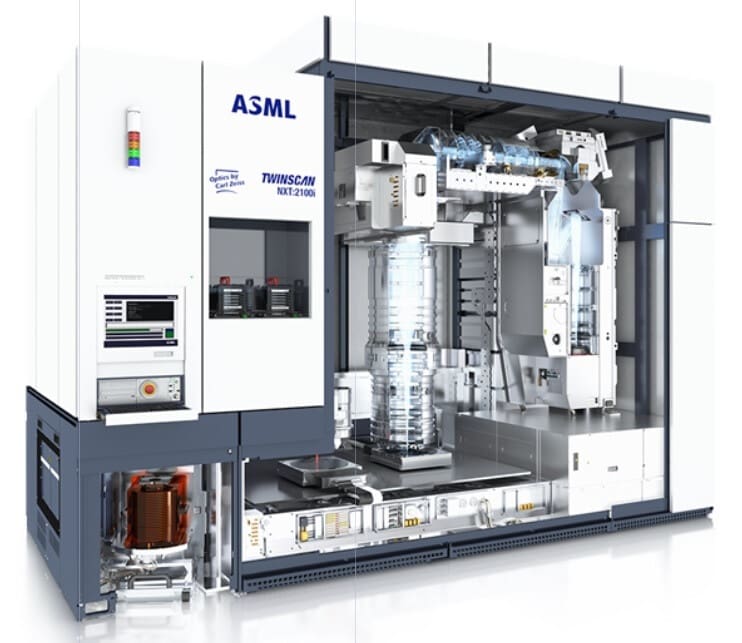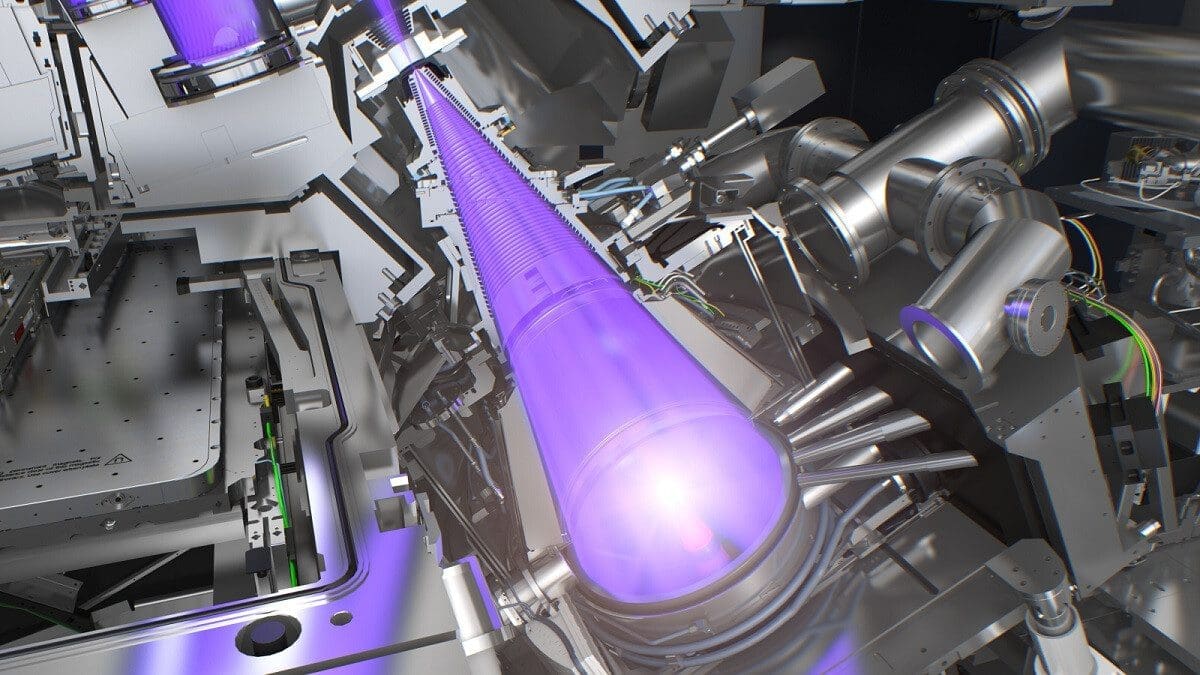Have you ever wondered how tens of billions of transistors can fit inside a small die? The discovery, production, and continued improvement of semiconductors is one of the most amazing achievements of man. And the lithography machines used to etch circuitry patterns on the silicon wafers that are cut into multiple dies are also incredible. There is but one company that manufactures extreme ultraviolet lithography (EUV) machines and that is a Dutch firm called ASML.
The EUV was the machine that took chips from the 10nm process node to the current 3nm chips being used this year on the iPhone 15 Pro and iPhone 15 Pro Max only (thanks to the A17 Pro). Next year, we should see more handsets powered by 3nm silicon. How thin are the patterns etched out by the EUV machine? A human hair has a diameter measuring 70 microns (each micron is .00004 inches meaning that there are 25,000 microns in an inch) which is 1000 times the diameter of the patterns being etched on a wafer by the EUV machine.
Dutch manufacturer ASML is still allowed to ship older lithography machines to China
Cutting-edge lithography equipment is not allowed to be shipped to China due to U.S. restrictions. But the sanctions don’t prevent ASML from shipping older lithography machines to the country allowing foundries like SMIC (the largest in China) to produce legacy chips (larger node chips) that are used on automobiles and home appliances. Some also believe that an older DUV (deep ultraviolet lithography) machine helped SMIC produce the 7nm Kirin 9000s 5G chip that stunned the smartphone industry when it was found inside Huawei’s latest Mate 60 flagship line this past summer..

S of ASML’s DUV machines are not allowed to be shipped to China
Per the South China Morning Post, last week at a media event, ASML senior vice-president and the head of its China division, Shen Bo, said, “Demand outside of China has experienced great fluctuations during the downward market cycle … but China’s current demand for mature node products remains very strong. We were told by our [Chinese] clients that the orders needed to be delivered as soon as possible. This year has given us a chance to catch a breath and make up for the ‘debts’ we owed to global and Chinese clients in the past two years.”
ASML has a backlog of $37 billion that needs to be shipped. These orders were placed in 2021 and 2022 and include some orders destined to be shipped to China. If the U.S. toughens its export restrictions, which was mentioned as a possibility in the wake of Huawei’s unveiling of the Mate 60 series powered by the Kirin 9000s 5G chipset, some or all of the orders headed to China could be canceled.
ASML is looking to expand its headcount in China
ASML’s Twinscan 2000 DUV series won’t be delivered in China starting January 1st. This machine can be used to help manufacture advanced 7nm and 5nm chips. Orders from China made up 46% of ASML’s Q3 revenue and Shen says that ASML will look to increase its repair, service, and product development in China while expanding its workforce in the country over the next two years.
Even if ASML helps Chinese foundries with the production of chips using legacy nodes it will still be unable to ship its cutting-edge EUV lithography machines to China including the new High-NA machine. The U.S. Commerce Department is using its power to try and prevent China from producing powerful silicon that supports 5G. The U.S. may not be worried about Huawei turning out smartphones that compete with the iPhone (or maybe it is). The real concern is that cutting-edge chips will be obtained and deployed by the Chinese military.












